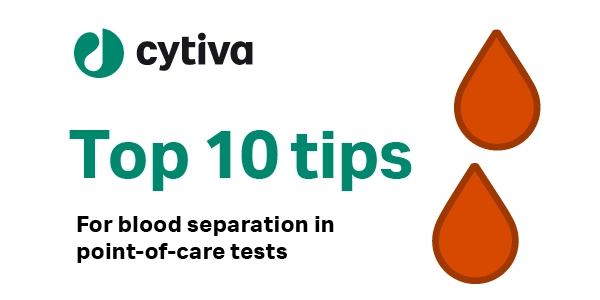
Top 10 Tips for Blood Separation in Point-of-Care Tests

A guide to best practices to ensure integrity and enhance testing performance
Using depth filtration Optimizing blood flow through membranes Selecting appropriate filtration materials Controlling blood volume Employing a chase buffer

DOWNLOAD THIS ARTICLE TO LEARN MORE

Become a member and enjoy exclusive benefits
Create an account now for exclusive benefits, personalized recommendations, and seamless order tracking. Elevate your lab experience today!